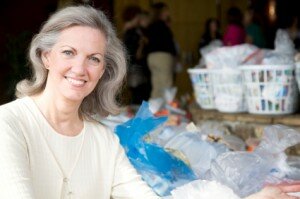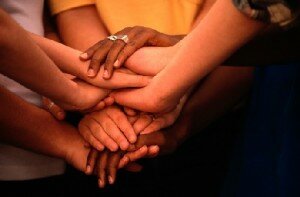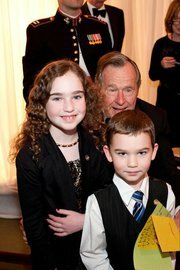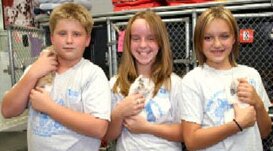The shuffling, mindless creep towards the inevitable end of everything we know and love.
Zombies.
What’s the best way to deal with the impending zombie apocalypse?
Start recruiting volunteers to help you rebuild society. It might sound a bit strange to start thinking about rebuilding after the zombie apocalypse before it’s happened, but you always start recruiting volunteers before you need them. Besides, we know not to start recruiting volunteers on the day of our projects, why would recruiting for the zombie apocalypse be any different?
- 6 Tips for Writing an Awesome Volunteer Position Description
- Crafting a Volunteer Recruitment Message
 Get ready for the inevitable rise of the living dead. Being prepared is the most important part of any emergency, and different emergencies require different kinds of preparedness. there are some basic steps that you want to follow for all emergencies, though. Make sure that you have a plan in place and everyone in your family knows what to do when the zombies finally come.
Get ready for the inevitable rise of the living dead. Being prepared is the most important part of any emergency, and different emergencies require different kinds of preparedness. there are some basic steps that you want to follow for all emergencies, though. Make sure that you have a plan in place and everyone in your family knows what to do when the zombies finally come.
When the zombies come, it’s all about efficiency. Remember, it’s not about what everyone else is doing, it’s about what works best for you. Don’t focus on the preferred or cool way to get the job done. Focus on getting things done. Partnering with big companies might seem like the best way to stay alive when the zombies come, but building strong partnerships with your neighbors is important, too. They’re not as flashy, but smaller organizations are more adaptable, which makes survival easier. Zombies hate that!
Braaaiiinnnsss. Once the zombie apocalypse starts to wind down, the survivors are going to need to start rebuilding society. You’ll need all kinds of volunteers to help rebuild, and volunteers with specific skills will be helpful in restoring society to it’s pre-zombie splendor. You’ll want to recruit skills-based volunteers, because the very things that the living dead feed upon will help to rebuild society. Yes, skills-based volunteers keep all of their knowledge in their braaaiiinnnsss.
 The Double Tap. Not only effective in making sure a zombie goes down and stays down (they’re good fakers, zombies), the double tap can be used in just about every aspect of working with volunteers. Whether it’s making the ask for volunteers, orienting volunteers, training volunteers, or thanking them for a job well done, always take the time to do it twice.
The Double Tap. Not only effective in making sure a zombie goes down and stays down (they’re good fakers, zombies), the double tap can be used in just about every aspect of working with volunteers. Whether it’s making the ask for volunteers, orienting volunteers, training volunteers, or thanking them for a job well done, always take the time to do it twice.



 You know that publicity is important for spreading your organizations message to the world, but how exactly do you do it? The most important step in your communication plan should be start early, before the demands from your organization start pulling you in too many different directions. Here is a to-do-list that can make contacting the media about your projects less daunting:
You know that publicity is important for spreading your organizations message to the world, but how exactly do you do it? The most important step in your communication plan should be start early, before the demands from your organization start pulling you in too many different directions. Here is a to-do-list that can make contacting the media about your projects less daunting: Identify your audience and set your organization’s priorities. Brainstorm a list of people that can help you accomplish your organization’s goals. Spend most of your time with the people who can help spread your organization’s message and diversify your audience more.
Identify your audience and set your organization’s priorities. Brainstorm a list of people that can help you accomplish your organization’s goals. Spend most of your time with the people who can help spread your organization’s message and diversify your audience more. Whether you represent a nonprofit organization, volunteer center, corporation, community foundation, community of faith, or other group, these guidelines can help you thoughtfully approach and organize a successful partnership, thereby playing a key role in strengthening neighborhoods and families.
Whether you represent a nonprofit organization, volunteer center, corporation, community foundation, community of faith, or other group, these guidelines can help you thoughtfully approach and organize a successful partnership, thereby playing a key role in strengthening neighborhoods and families. Meet with key community leaders or invite community representatives to forums where they can participate and become informed about resources for the neighborhood. Develop connections with leaders and residents that foster sustainable activities to address the issues they want to work on in their community.
Meet with key community leaders or invite community representatives to forums where they can participate and become informed about resources for the neighborhood. Develop connections with leaders and residents that foster sustainable activities to address the issues they want to work on in their community.
 Be highly aware of the images used in materials targeted towards boomers. According to the Boomer Project national survey, boomers see themselves as being at least 12 years younger than their chronological age. Images of individuals they perceive as “elderly” may be unappealing to boomers – they want to see people who reflect their own self-image.
Be highly aware of the images used in materials targeted towards boomers. According to the Boomer Project national survey, boomers see themselves as being at least 12 years younger than their chronological age. Images of individuals they perceive as “elderly” may be unappealing to boomers – they want to see people who reflect their own self-image.
 As connectors of people and organizations, you may have access to a wide variety of community partners. By leveraging these relationships – on both a formal and informal basis – you can gain support for new initiatives that expand outreached for increased and more effective engagement. Partnerships also allow organizations with limited resources to maximize impact from existing opportunities.
As connectors of people and organizations, you may have access to a wide variety of community partners. By leveraging these relationships – on both a formal and informal basis – you can gain support for new initiatives that expand outreached for increased and more effective engagement. Partnerships also allow organizations with limited resources to maximize impact from existing opportunities.

![IMG_3238[1]](/wp-content/uploads/2011/10/IMG_32381-1024x768.jpg)
![IMG_3233[1]](/wp-content/uploads/2011/10/IMG_323312-1024x768.jpg)
 This Saturday marks the 21st anniversary of Make A Difference Day. Since 1990, HandsOn Network and USA WEEKEND have joined together to sponsor Make A Difference Day, the largest national day of community service. Millions of Americans will unite in a common mission to improve the lives of others this Saturday.
This Saturday marks the 21st anniversary of Make A Difference Day. Since 1990, HandsOn Network and USA WEEKEND have joined together to sponsor Make A Difference Day, the largest national day of community service. Millions of Americans will unite in a common mission to improve the lives of others this Saturday.





